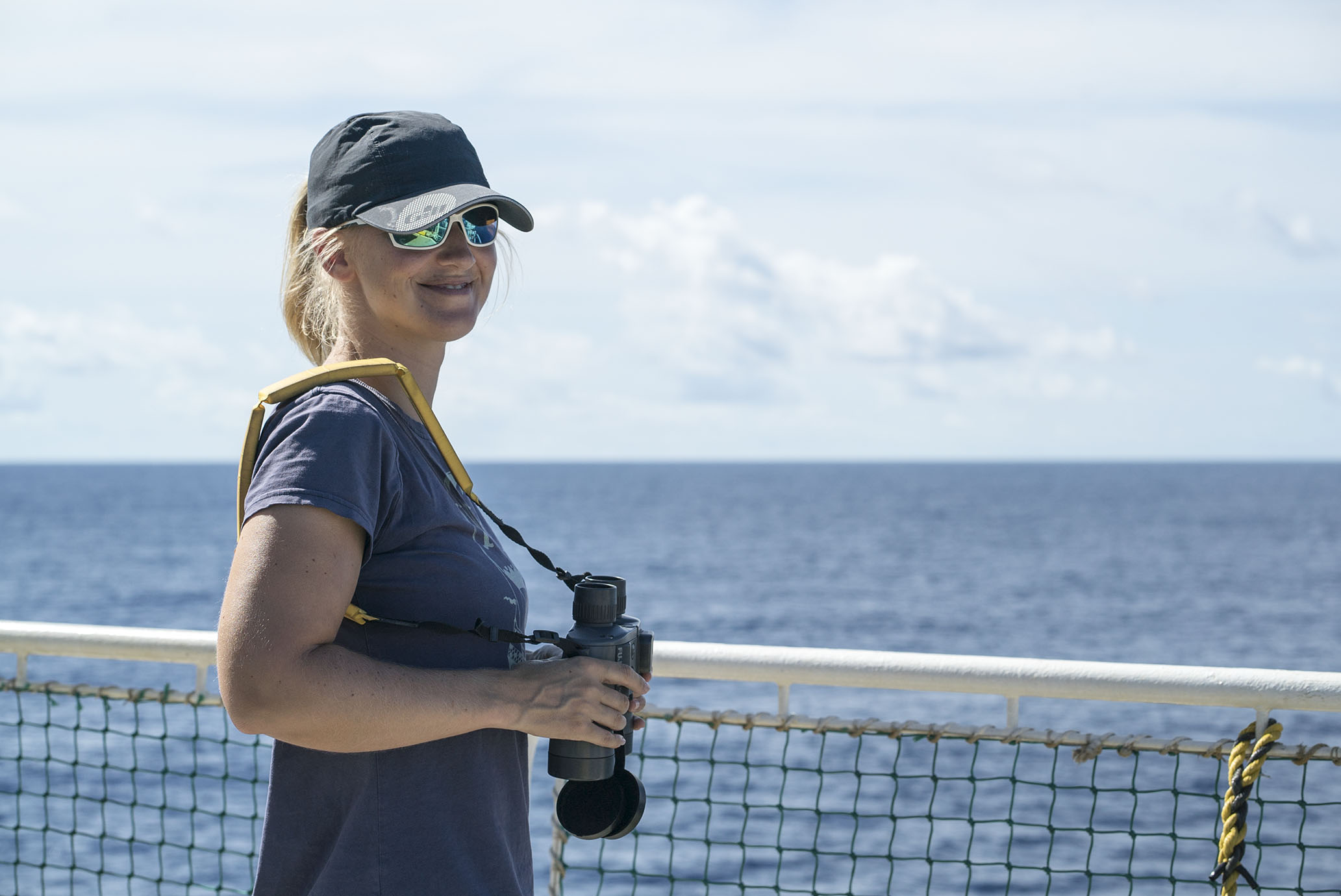
A flash of light catches my eye and I raise my binoculars to check it out. A dolphin perhaps? Or a basking turtle? I search until I spot it again. The object is bobbing high in the water, doing a little dance in the light breeze. It is a stick. It has bobbed far to get here, over 300 miles from land, through waters five kilometres (km) deep.
I keep watching, straining to keep my tired eyes entertained. It is hot on the bridge, and the 12:00pm to 2:00pm shift – immediately after a heavy French lunch complete with cheese and wine – is dragging. The incessant heat of the midday sun drives me from the roof of the bridge. I gain shade but lose what little breeze there was and now must find a way to stay alert for another hour and 12 minutes.
I straighten up and scan the water ahead of the R/V Marion Dufresne looking for any splash or sign of movement. Still nothing. The scrawled notes in my open book speak of plastic and discarded fishing gear. I investigate some floating vegetation close to the vessel, looking for the shoals of fish that often seek shelter beneath debris. One hour and two minutes to go.
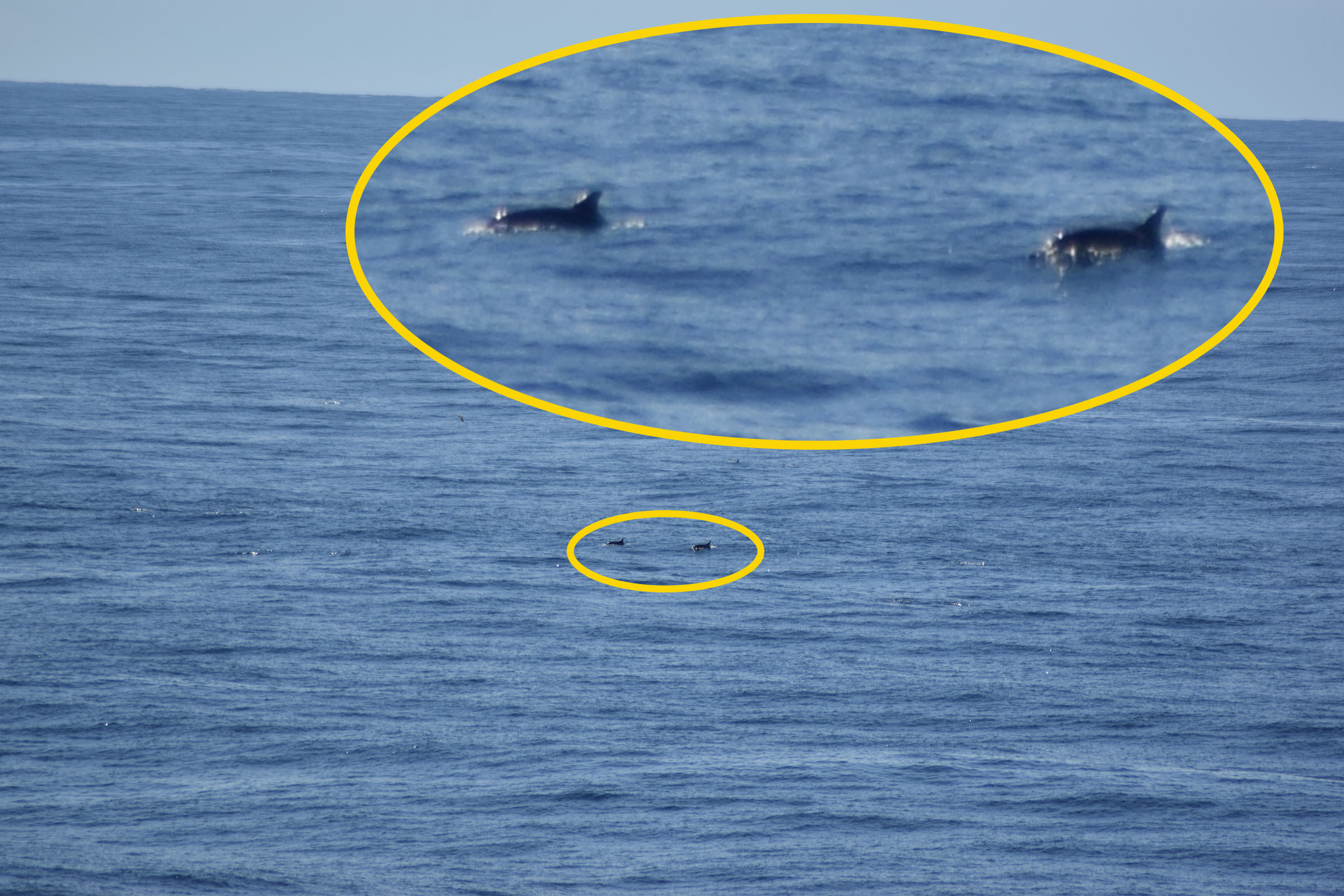
Life as a marine mammal observer is not always like this, of course. On our first day of transiting from Jakarta to the Wharton Basin, we had five sightings of marine mammals and saw three huge sharks feeding on shoals of fish.
On the same day, we saw many different seabirds including the critically endangered Christmas Frigatebird. Breeding only on Christmas Island – a small island to the west of Java – this species has a dramatic two-metre (m) wingspan, a long hooked bill, and a graceful scissor-shaped tail. Adult males inflate a crimson gular pouch on their throat to impress the females during courtship rituals.
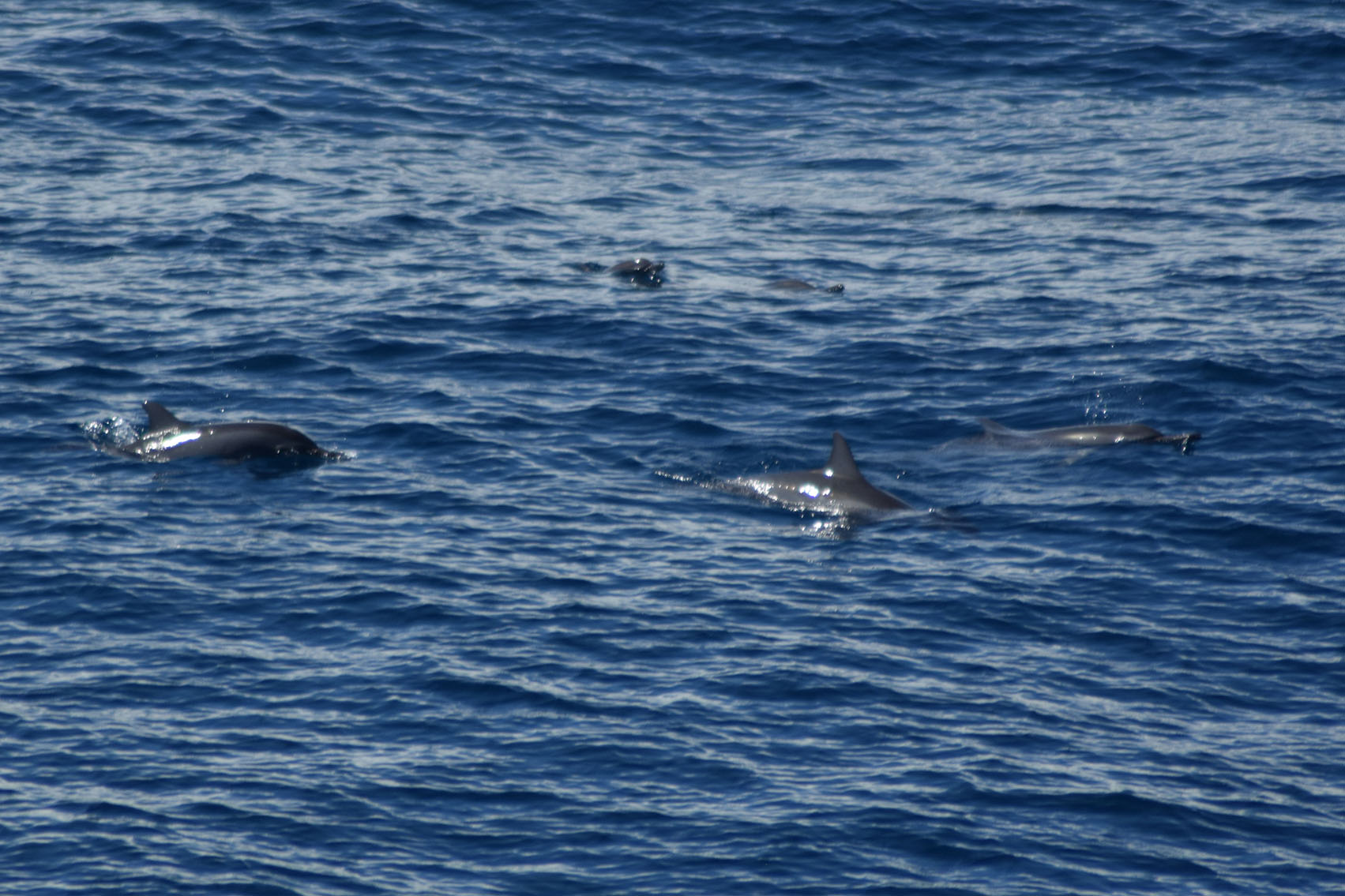
The dolphin sightings came in quick succession that day. First, a small group of five or six dolphins leisurely approached the bow of the vessel. Surfacing only once as they neared the vessel, but visible beneath the calm surface, the dolphins were slender, uniformly grey, and frustratingly indistinctive.
Hoping they would bow-ride the vessel and give me a closer look, I dashed down to the main deck and hurried to the bow, camera in hand. There was no sign of them and our first sighting was over as suddenly as it had begun.
Barely half an hour later, more dorsal fins broke the water’s surface 500 m from the starboard bow. These dolphins were bigger, darker and lacked the distinct beak of most ocean dolphin species. With their rounded heads and large bodies, they had to be one of the blackfish species, but which one?
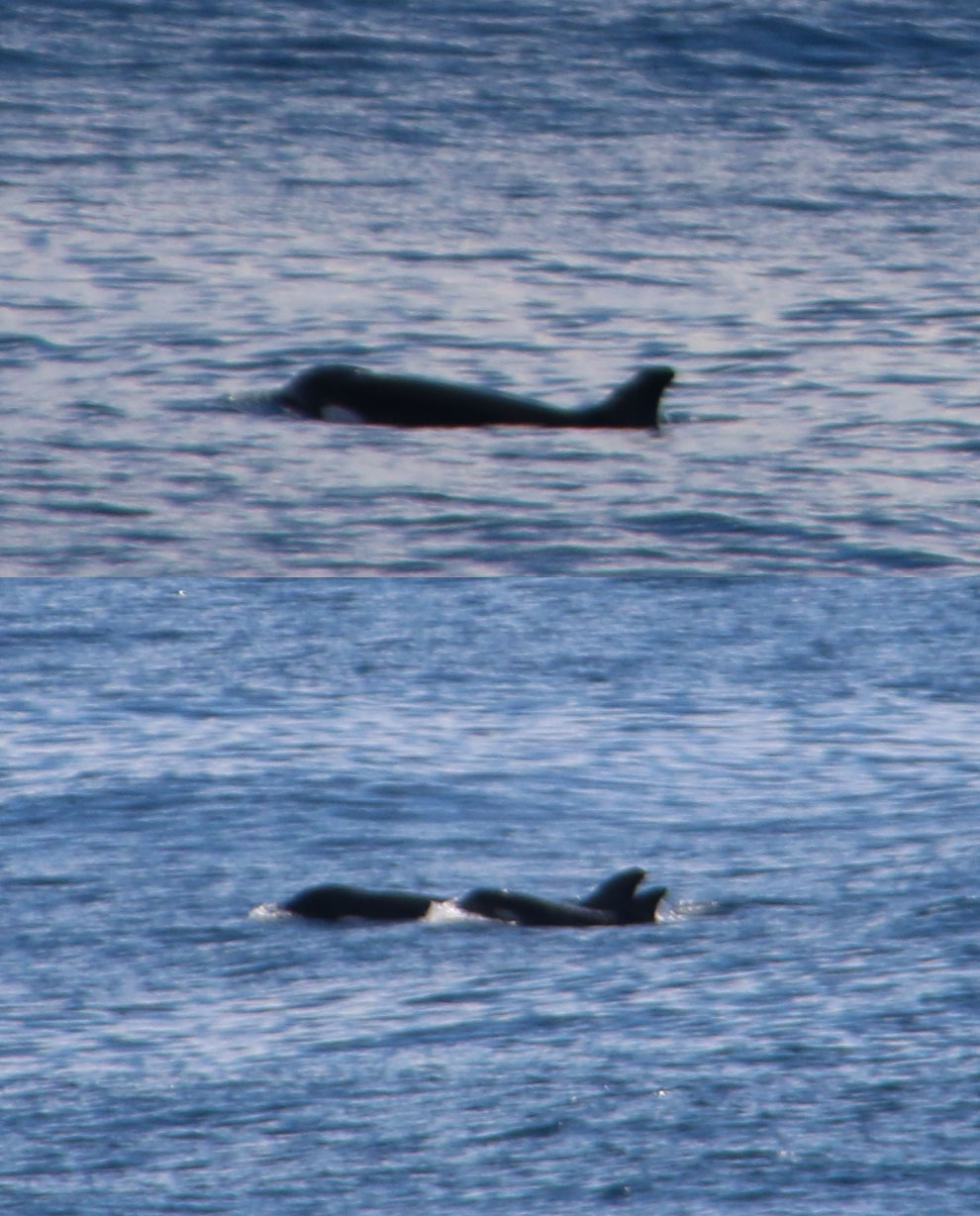
Our cameras clicked with each surfacing as we tried to snap a photo that would hold a clue to their identity. In the end, it was the unusual parallelogram-shape of their dorsal fins that led us to conclude that we had encountered a group of false killer whales.
But before the day was over, we would encounter the real deal – killer whales!
Up on the roof of the bridge in the cooler hours of the afternoon, we were still buzzing from the sighting of a large group of dolphins performing spinning leaps, when a dark body surfaced ahead of the vessel. Five or six metres long, with a tall, falcate dorsal fin – this animal could only be one of a small number of species, all of them exciting.
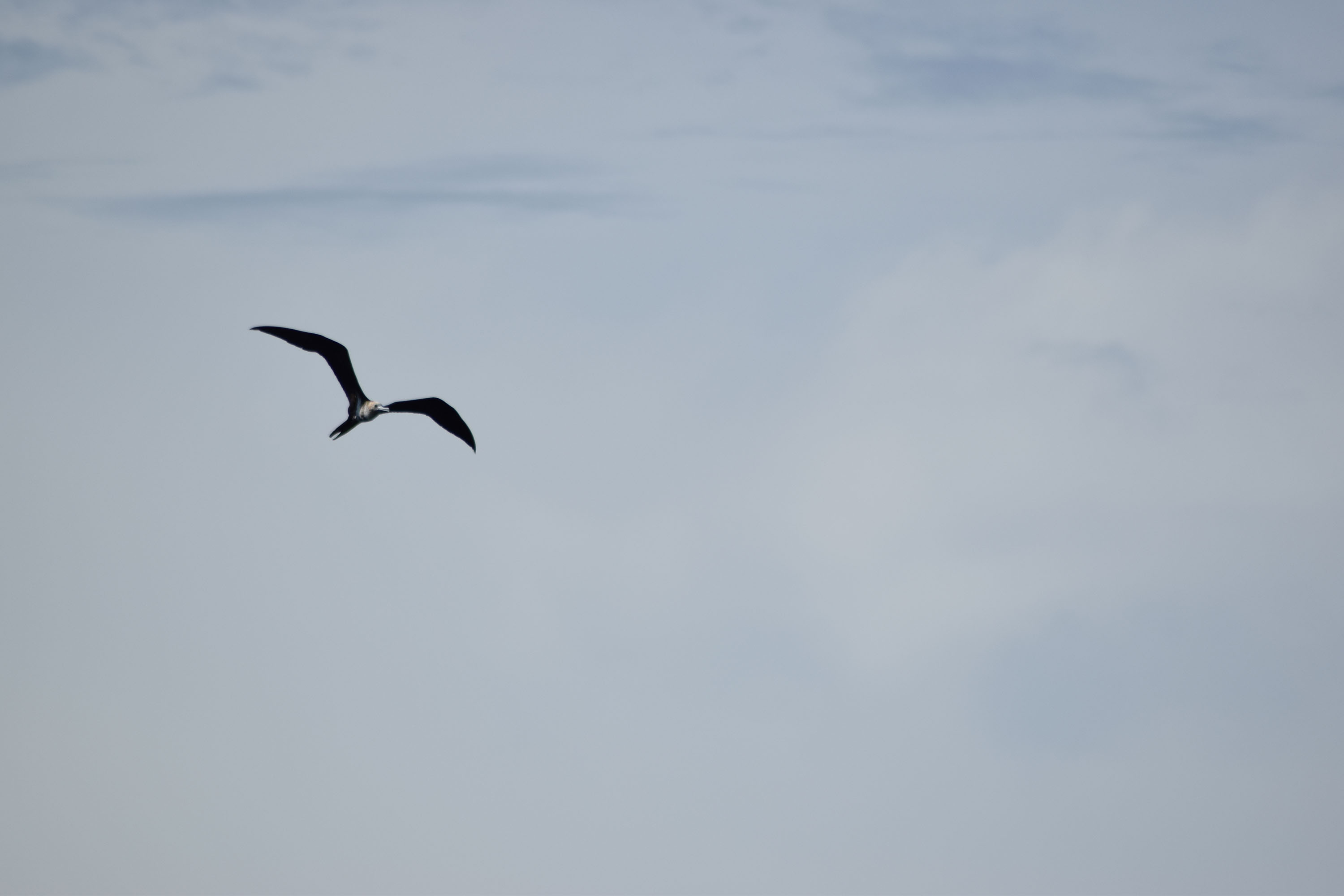
Surfacing again and now abeam of the vessel, this time there were two. A few more surfacings and they were gone, left in the wake of the R/V Marion Dufresne as we steamed towards the Wharton Basin. Only once they were out of sight, did I have the chance to look through my photos and – there they were, the diagnostic white eye-patches: killer whales.
And so the trip continues with busy days and quieter ones, doldrum-like days of overwhelming heat, and dark squalls that fling deluges of rain against the windows and turn the tropical sea a dismal grey.
In the absence of marine mammal sightings, we continue to log other fauna – birds, pelagic fish and turtles – and also the shipping vessels and ocean pollution that we encounter. In an area where so little is known of the local marine wildlife, this expedition is as fascinating for the marine mammal observers as it is for the geologists.
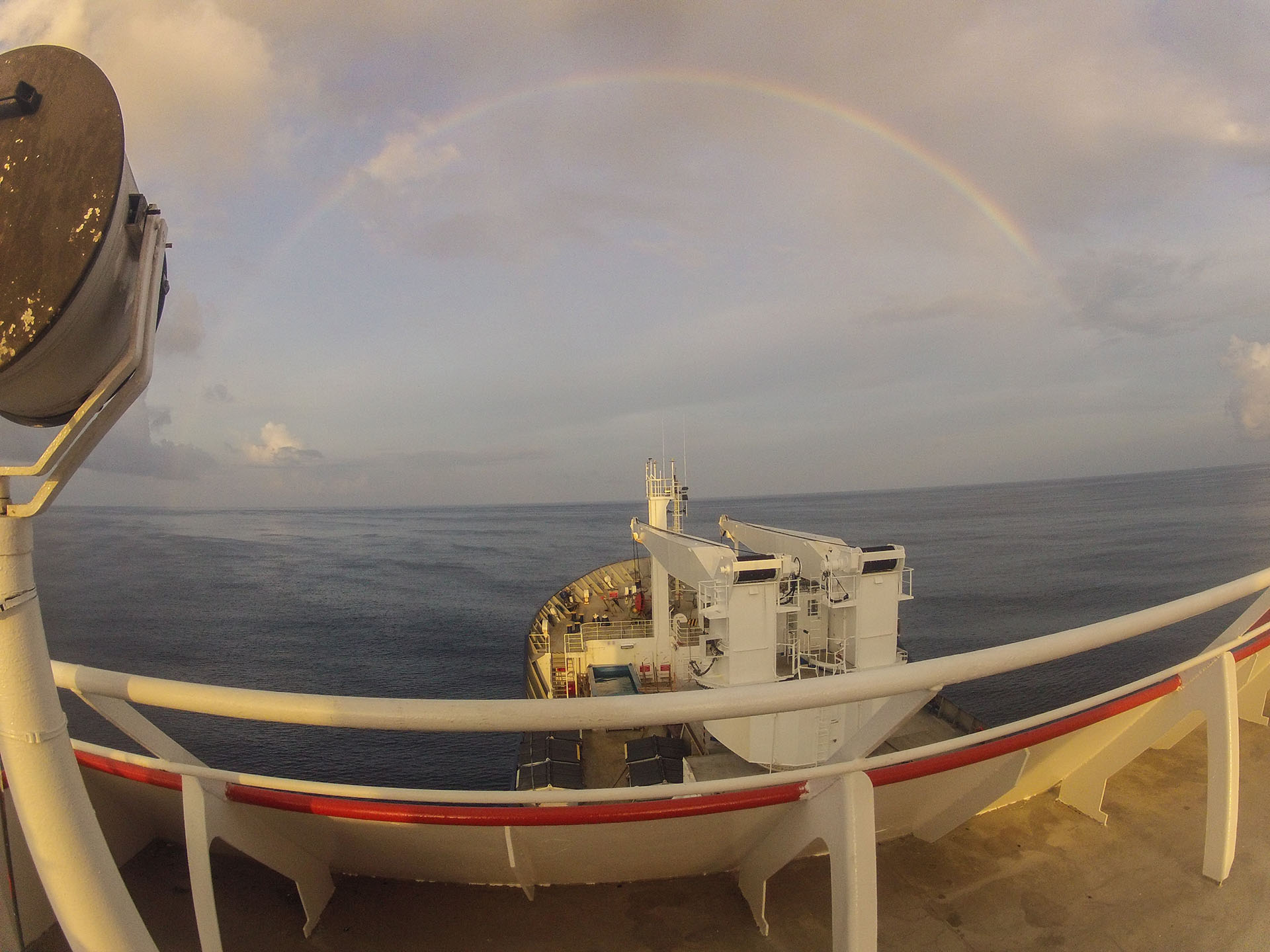
Follow the progress of MIRAGE II between 25th September and 20th October 2017 on the EOS blog, and spread the word using #MIRAGEcruise.